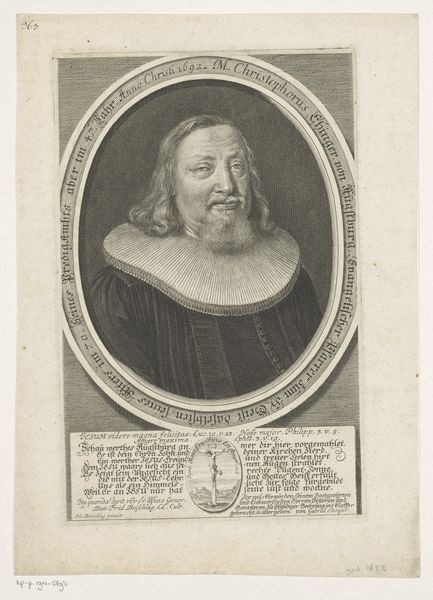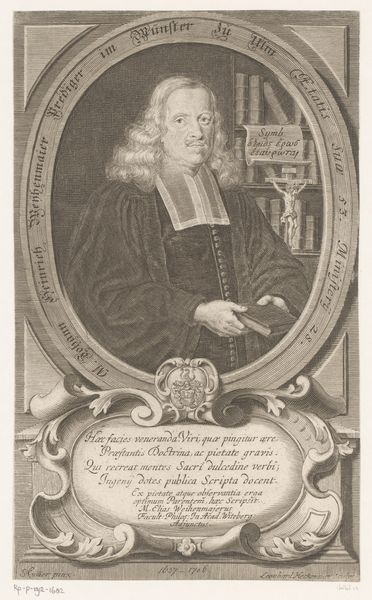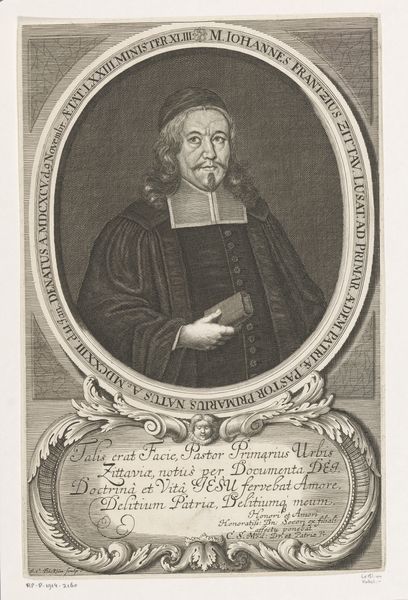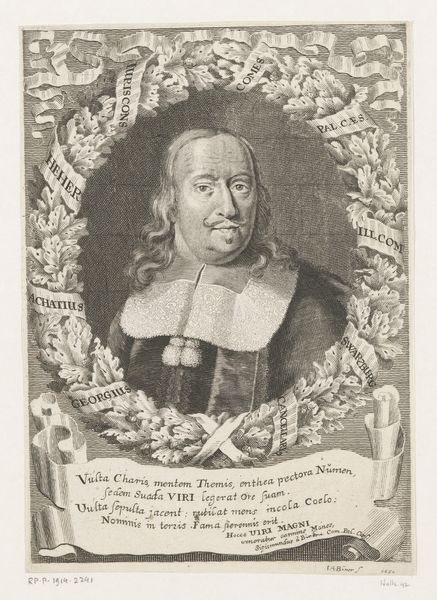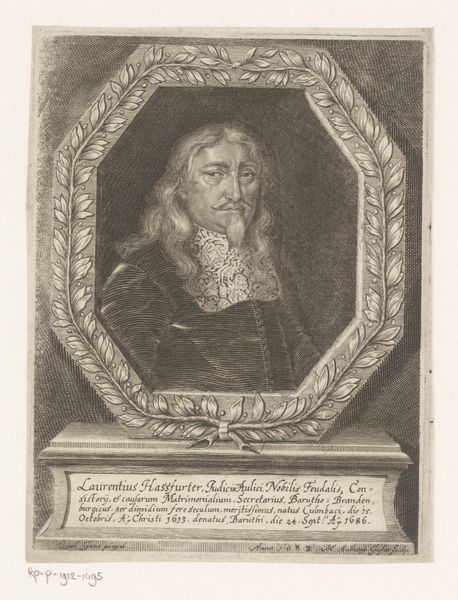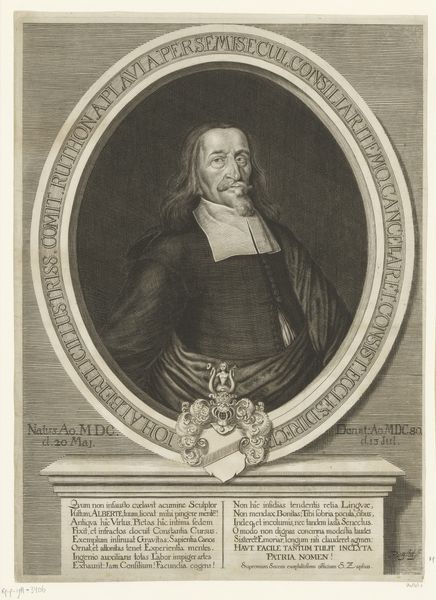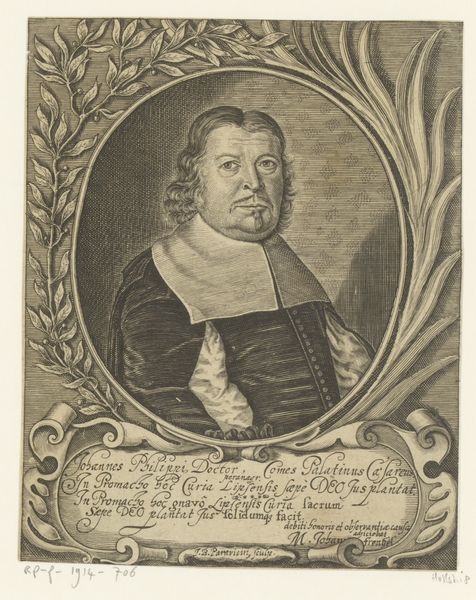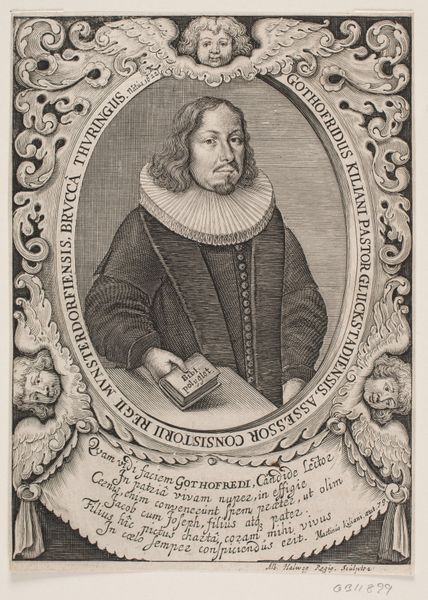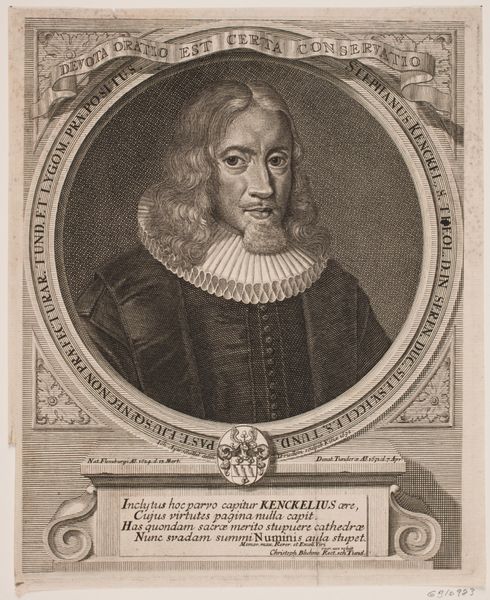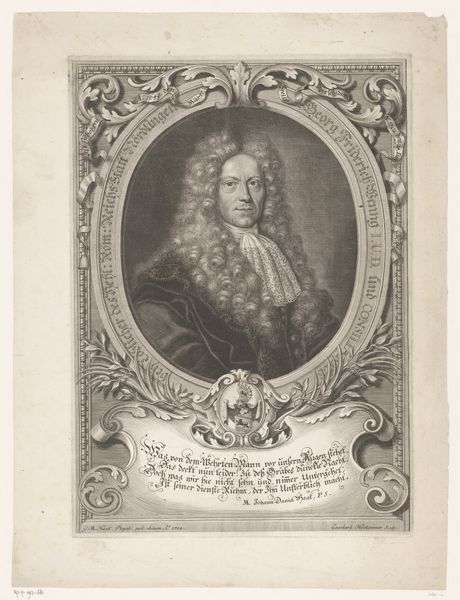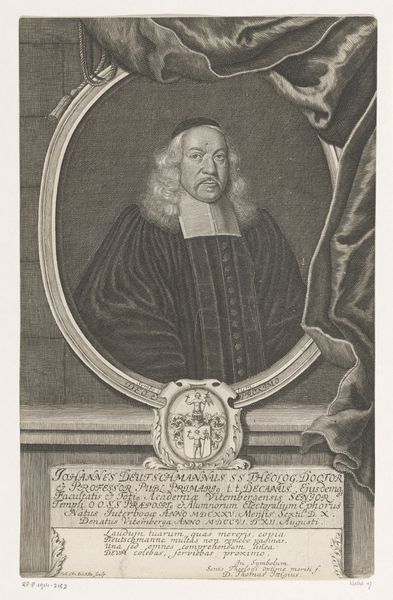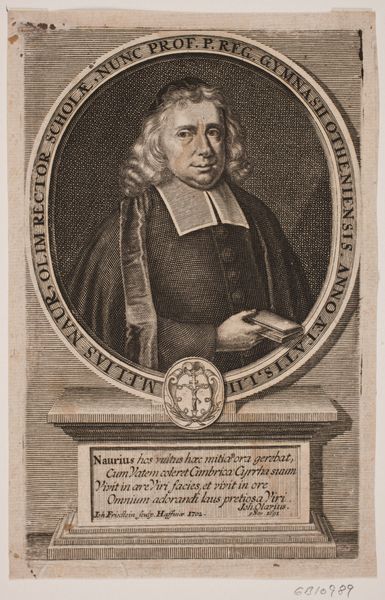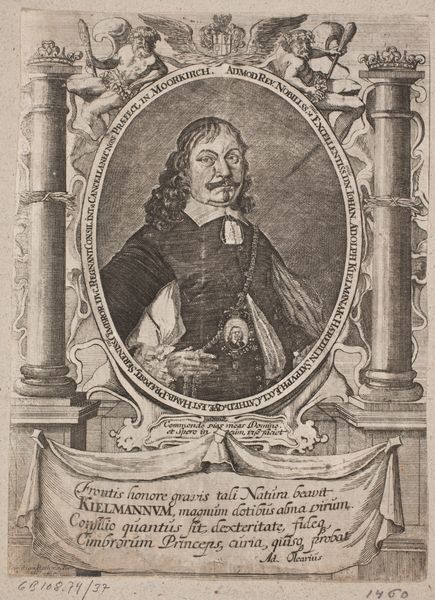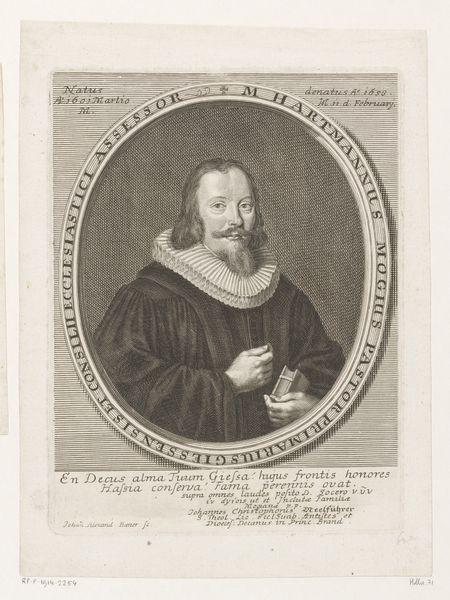
engraving
#
portrait
#
baroque
#
history-painting
#
engraving
#
calligraphy
Dimensions: height 282 mm, width 222 mm
Copyright: Rijks Museum: Open Domain
Editor: This is “Portret van Christian Lorentz von Adlershelm,” a 1665 engraving by Johann Caspar Hoeckner, housed at the Rijksmuseum. The intricate details are really striking. All the symbolic decorations really add to the portrait itself. I wonder, what stands out to you when you look at this work? Curator: Immediately, I'm drawn to how this engraving reflects the political landscape of its time. Notice the inclusion of his coat of arms, his status denoted as a "Saxon Elector." These visual markers are so deliberate. Engravings like these served as propaganda, tools used to broadcast a leader's power and legitimacy. How do you see this portrait functioning within that historical context? Editor: I see your point, almost like a carefully constructed PR campaign. The artist obviously intended for viewers to see Christian Lorentz von Adlershelm as important. The symbols, his confident gaze, even the calligraphy – all work together to project authority. Was this sort of image widespread at the time? Curator: Absolutely. Portrait engravings were a relatively accessible medium compared to painted portraits. These prints could circulate widely, shaping public perception and solidifying political narratives. The Baroque style lends itself well to this, all the ornamentation served to magnify status, to reinforce these hierarchies. Do you think this magnification worked? Editor: It does seem effective. Even without knowing the historical context, there's an undeniable sense of importance radiating from the figure. I initially focused on aesthetics, but your interpretation highlights the fascinating relationship between art, power, and social structures. Curator: Precisely, seeing beyond the artistic technique to understanding the intentions and reception adds depth to how we appreciate art. What's most interesting to me is the blending of artistry with the need for that political image. Editor: Now, seeing how it was very intentional and politically motivated changes my viewpoint drastically.
Comments
No comments
Be the first to comment and join the conversation on the ultimate creative platform.
